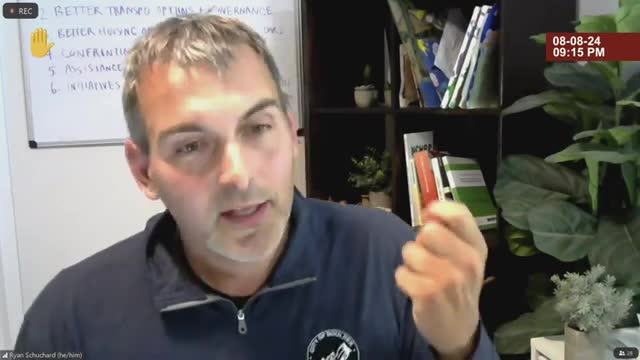City leaders push for radical parking policy reforms
August 09, 2024 | Boulder, Boulder County, Colorado
This article was created by AI summarizing key points discussed. AI makes mistakes, so for full details and context, please refer to the video of the full meeting. Please report any errors so we can fix them. Report an error »

In a recent government meeting, officials discussed a comprehensive approach to transportation demand management (TDM) aimed at addressing urban congestion and promoting more efficient use of city resources. Key points included the need to decouple the perception of overcrowding from the actual causes, primarily the reliance on personal vehicles.
The discussion emphasized the importance of updating target outcomes for transportation policies to ensure consistency across various components. Officials proposed ending subsidies for personal passenger cars, advocating instead for incentives that promote smaller, more efficient vehicles. This shift is seen as essential for creating a safer and more resource-efficient urban environment.
A significant portion of the meeting focused on integrating TDM strategies with land use policies. Officials acknowledged that the current car-centric infrastructure is a result of past decisions and emphasized the need for reforms to encourage a shift towards more sustainable transportation options. This includes a call for a broader application of TDM beyond just developer requirements, suggesting that it should inform citywide policy-making.
The conversation also touched on parking policies, with suggestions to eliminate minimum parking requirements for new developments. This move aims to reduce unnecessary costs for developers and encourage more innovative land use. Additionally, there was a push for improved bike parking infrastructure and the need to consider the parking needs of various businesses, particularly as demographics and work patterns evolve.
Officials highlighted the importance of accommodating electric vehicle (EV) charging solutions in the context of these parking changes, ensuring that residents without garages can still access charging options. The meeting concluded with a call for data-driven approaches to inform future parking and transportation policies, emphasizing the need for a balanced perspective that recognizes the diverse needs of the community while promoting multimodal transportation options.
The discussion emphasized the importance of updating target outcomes for transportation policies to ensure consistency across various components. Officials proposed ending subsidies for personal passenger cars, advocating instead for incentives that promote smaller, more efficient vehicles. This shift is seen as essential for creating a safer and more resource-efficient urban environment.
A significant portion of the meeting focused on integrating TDM strategies with land use policies. Officials acknowledged that the current car-centric infrastructure is a result of past decisions and emphasized the need for reforms to encourage a shift towards more sustainable transportation options. This includes a call for a broader application of TDM beyond just developer requirements, suggesting that it should inform citywide policy-making.
The conversation also touched on parking policies, with suggestions to eliminate minimum parking requirements for new developments. This move aims to reduce unnecessary costs for developers and encourage more innovative land use. Additionally, there was a push for improved bike parking infrastructure and the need to consider the parking needs of various businesses, particularly as demographics and work patterns evolve.
Officials highlighted the importance of accommodating electric vehicle (EV) charging solutions in the context of these parking changes, ensuring that residents without garages can still access charging options. The meeting concluded with a call for data-driven approaches to inform future parking and transportation policies, emphasizing the need for a balanced perspective that recognizes the diverse needs of the community while promoting multimodal transportation options.
View full meeting
This article is based on a recent meeting—watch the full video and explore the complete transcript for deeper insights into the discussion.
View full meeting
